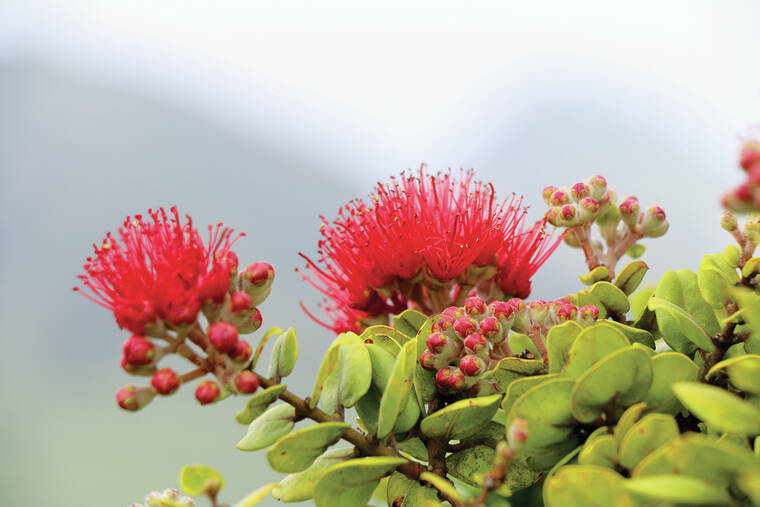LIHU‘E — Money may not grow on trees, but it can certainly protect them.
Hawai‘i’s congressional members are seeking $55 million in federal funds to combat rapid ‘ohi‘a death, a fungal disease that’s killed over a million of Hawai‘i’s ‘ohi‘a trees in less than a decade.
U.S. Sens. Mazie Hirono and Brian Schatz, alongside U.S. Reps. Jill Tokuda and Ed Case, all Democrats, introduced in Congress this week the Continued Rapid ‘Ohi‘a Death Response Act of 2023.
If passed, the act would distribute $5 million annually between the U.S. Geological Survey, U.S. Fish and Wildlife Service and U.S. Forest Service between 2024 and 2034, to support ongoing efforts against the fungal spread.
“‘Ohi‘a plays an important role in protecting our native ecosystems,” Hirono said. “And I am proud to lead our delegation in advocating for the federal resources Hawai‘i needs to prevent further ‘ohi‘a death and protect our state’s unique biodiversity.”
In Hawai‘i’s forests, the ‘ohi‘a is what’s known as a keystone species, meaning a litany of plants and animals within the ecosystem rely on it for survival.
“In Hawai‘i, ‘ohi‘a are what we consider a foundational species,” said Corie Yanger, USGS native forest restoration researcher and former University of Hawai‘i rapid ‘ohi‘a death outreach and education specialist.
“They are among the first flowering plants to take root on our young lava flows. And over time, they remain and eventually become sort of pillars of the forest — literally — holding up other species through the way that they grow.”
On its branches and trunks, mosses and lichens depend on the ‘ohi‘a’s moisture. From its flowers, ‘ohi‘a provides nectar, a critical food for many honeycreeper species. Other birds use the trees’ canopy as shelter. Underground, the water collected from the ‘ohi‘a’s canopy feeds into the islands’ aquifers, providing humans with drinking water. And all throughout the trees, a litany of Hawai‘i’s insects call the ‘ohi‘a home.
As the ‘ohi‘a comes under threat, all other flora and fauna that rely on it are also imperiled.
“The loss of ‘ohi‘a through the spread of rapid ‘ohi‘a death would be potentially very devastating,” Yanger said.
Rapid ‘ohi‘a death, caused by two species of the ceratocystis fungus, was first discovered in 2014 after landowners in Puna, Hawai‘i Island, noticed that tens of thousands of acres of ‘ohi‘a trees were dying in quick succession.
Since then, the fungi have spread to Kaua‘i, Maui and O‘ahu, killing over one million ‘ohi‘a trees in the process.
To combat the far-reaching spread of ceratocystis, Hawai‘i’s congressional members are seeking federal funds to continue research on the fungi’s vectors and transmission, as well as management of ungulates, such as hogs and deer, which can leave cuts on the trees, making them more susceptible to infection.
“(Rapid ‘ohi‘a death’s) spread throughout Hawai‘i is deeply troubling,” Tokuda said. “This bill is a step in the right direction, to ensure this critical natural and cultural resource is there for the next generation.”
•••
Jackson Healy, reporter, can be reached at 808-647-4966 or jhealy@thegardenisland.com.


